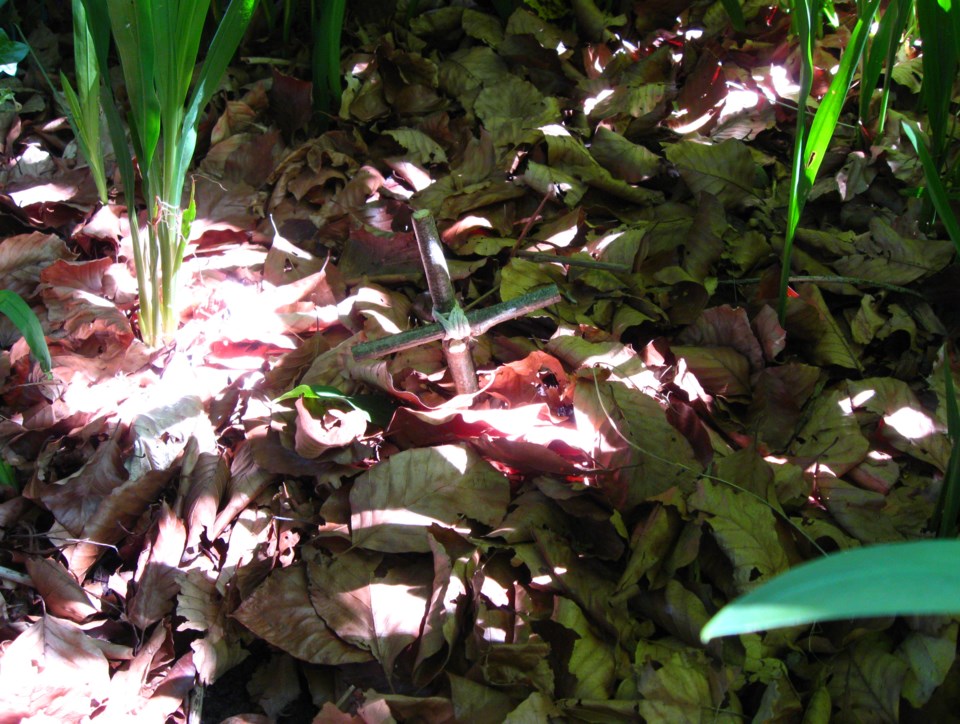It was late afternoon Friday, May 23. I was about to go upstairs when I glanced out the hall window towards the street where I saw a small bird lying on its back, fluttering its wings. Looming over it was a crow, pecking at it again and again and again. I tore out the door, grabbing a paper towel and a pair of gloves, and raced to where the unspeakable incident was happening. I was weeping and enraged.
“How could you?” I kept shouting. “How could you do this?”
The crow backed off. The little bird was in great distress. At first I thought it was a fledgling crow, but its yellow pointed beak suggested it was a starling. Its head was raw and bleeding and so was its right side. When I picked it up, it struggled. The crow was watching. I kept shouting at it, my voice shaking.
Carrying the wounded bird on the paper towel, I headed for my carport. I found a large plant saucer in which I laid the bird. It was still struggling, stretching its long legs as if it wanted to stand up. At one point it did manage to right itself but then quickly fell over.
I didn’t know what to do. I’d read about rescuing baby birds that had fallen out of the nest and even fledglings that had inadvertently dropped to the ground, but that was not the situation here. I was confronted by one bird trying to kill another. It happens when a bird considers one of its own to be too weak, ill or otherwise unfit. But this was different. It was a crow attacking a young bird of another species. At first I couldn’t understand what was going on but now I believe the crow was preparing to eat it.
I knew that I shouldn’t interfere in such situations. There will always be certain behaviours I can’t understand. The crow has its instincts and I have mine. That day our instincts were in conflict like never before. I fear I might have made a bad mistake in reacting the way I did.
The bird was bleeding on the paper towel. I found a handful of long, soft grasses and lots of dried leaves to line the saucer. Discarding the bloodied paper towel, I placed the bird on top of a softer, drier bed. It was still breathing, not fast but steadily. It grabbed my thumb in its claws, the way a human baby or primate would grab a person’s finger.
While I was doing this the crow flew onto my car roof, as it always does when it wants me to feed it peanuts or, preferably, cutworms or chafer grubs found in the garden. But I was still angry and shouted, “How dare you?” The crow took off.
I had no idea for how much longer the wounded bird would live. I had to keep it safe from predators and as dry as possible overnight. A domed cover, perforated with air holes and set over the plant saucer, would keep out both light and rain, and I knew a place in the backyard where nothing larger than a bumblebee could enter to disturb the little bird. Before going to bed I took a look to see if it was all right. I couldn’t tell if it was breathing because it was getting very dark outside, but I didn’t want to terrify it by turning on a flashlight.
Saturday morning I went to check on it. I raised the domed cover. The bird was lying exactly as I’d left it on Friday night. It was not breathing. I took it in my hands. It was stiff.
During a brief pause in the rain, I searched in the garden for a spot to bury the young bird, settling on the former location of a butterfly bush that had succumbed to January’s Arctic cold. I dug a hole and slipped the bird on its bed of leaves and grass into it, covering it with earth and more dried leaves. Dozens of crocosmia will soon be blooming and wrap their green leaves and orange flowers around the burial site.
Saturday afternoon the crow flew back onto my car roof. I was no longer angry. I didn’t shout at it. I gave it some peanuts.
Even if I’d made a mistake by interfering in whatever was going on between those two creatures, I probably saved the young bird from being run over. That’s some consolation. Death on a bed of leaves seemed more dignified than being ground into the asphalt.
Anyway, for the crow, it was as if nothing had ever happened. It was back to business as usual.
Sabine Eiche is a local writer and art historian with a PhD from Princeton University. She is passionately involved in preserving the environment and protecting nature. Her columns deal with a broad range of topics and often include the history (etymology) of words in order to shed extra light on the subject.



